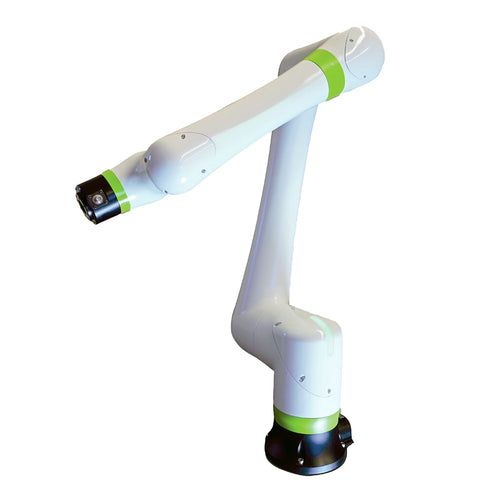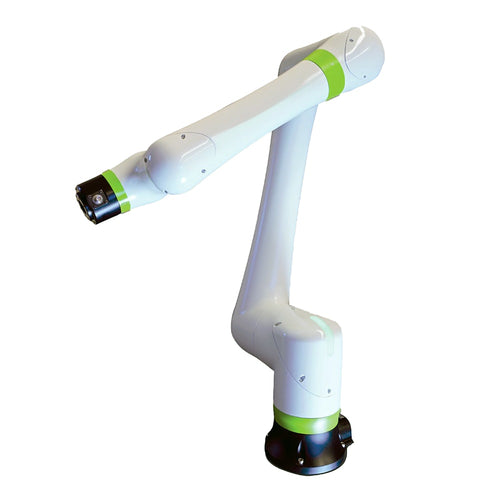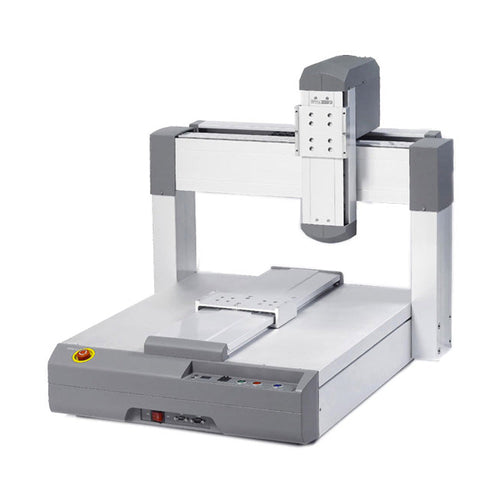Automation in manufacturing and production is becoming increasingly popular. It can lead to more efficiency, precision, and accuracy that can result in greater cost savings long-term for businesses. An important part of automating your business is determining what type of automation you need and how to implement it. Collaborative robots (cobots) and industrial robots are two popular options..
Our team reviews the differences between cobots versus industrial robots as well as how to choose the right system for your dispensing needs.
What is an Industrial Robot?
An industrial robot is a programmable robotic system that is used for industrial automation applications. Industrial robots tend to be large and powerful machines that can handle high speeds, high volumes, and heavy loads. They can also be used to perform complex or dangerous tasks.
Pros:
-
Are efficient
-
Can operate at high speeds and in high capacities
Cons:
-
Require special safety measures and barriers
-
Lack flexibility and adaptability
-
Have a high initial cost
Industrial robots may be used for a wide range of applications, including welding, painting, dispensing, assembling, and much more.
What Is a Cobot?
A collaborative robot or cobot is a robotic system that can work alongside humans in a shared workspace for manufacturing and production processes. They tend to have sensors to detect human presence for safety and may have learning capabilities to improve efficiency.
Pros:
-
Can work with humans
-
Are flexible and adaptable to different applications
-
Are user-friendly and easily integrated into existing setups
Cons:
-
May have a slower speed
-
May have payload limitations
Collaborative robots also have a diverse number of applications, including material dispensing, quality assurance, product assembly, and more.
What Is the Difference Between Cobots and Industrial Robots?
When looking to automate your adhesive dispensing, it is important to carefully compare cobots versus industrial robots. To begin, the two have many similarities. They both are automated robotic systems that can improve the efficiency and accuracy of manufacturing and production lines.
While they have numerous similarities, we are going to focus on the differences between collaborative robots and industrial robots.
Human Interaction
The biggest difference between cobots and industrial robots is how they interact with humans. While industrial robots can replace human workers, cobots are designed to work alongside humans. They are usually equipped with sensors and force-limiting features that allow them to detect human presence and shut off automatically if needed. These features eliminate the need for excessive safety precautions that industrial robots usually require.
Safety
Safety is another big difference between industrial robots and collaborative robots. Industrial robots can pose safety concerns to human workers, so they often need to be separated by restricted areas or physical barriers like cages. These added precautions ensure the robots remain distant from workers on the floor, but they tend to take up a lot more space. In contrast, cobots may actually improve workers' safety as they can handle dangerous tasks and are able to work alongside humans.
Integration
When it comes to integration, cobots tend to have the advantage over traditional industrial robots. Cobots are designed to be user-friendly, easy to program, and simple with an intuitive interface. Many cobots also allow for hand-guided teaching to reduce the learning curve for operators new to automation. Altogether, cobots can be great for businesses just getting started with automation. In contrast, industrial robots typically require time-consuming and complex programming and setup. They may also need additional software for integration.
Adaptability
When comparing industrial robots versus collaborative robots, it is important to consider their intended use as well as their potential uses in the future. In general, cobots are more adaptable and flexible than industrial robots. They are usually smaller in size and more compact, so they can be more easily relocated. Whereas industrial robots tend to have a fixed production process and are highly specialized, cobots are easily programmable and may be able to perform different tasks over time.
Capabilities
There are some slight differences in capabilities when comparing collaborative robots versus industrial robots. Cobots and industrial robots can be used for numerous applications, but industrial robots are designed mostly for very heavy-duty operations that involve a lot of weight or very high speeds.
Cost & ROI
Because of their smaller size, lower upfront installation costs, decreased training needs, and reprogramming capabilities, cobots are generally less expensive than industrial robots. Especially for smaller businesses that may repurpose the equipment for different applications, cobots can be a great cost-effective solution to automate production processes.
How to Choose Between Cobots & Industrial Robots for Dispensing
Material dispensing is a common component of many manufacturing processes. From dispensing adhesives, sealants, coatings, and more, adhesive dispensing robots can be used to handle these tasks with better precision and consistency than manual dispensing methods.
Because both systems have their pros and cons, it is important to consider the following when determining whether to choose an industrial robot versus a cobot for dispensing:
- Experience with automation
- Production volume and speed
- Dispensing complexity
- Available workspace
- Level of human interaction
- Need for flexibility
- Upfront costs and long-term ROI
Compared to industrial robots, collaborative robot dispensing systems tend to be a better fit for businesses with a smaller production space, less budget, and potentially changing production needs. They are also an ideal choice for businesses new to automation. A cobot dispensing arm, for example, would be a fairly compact and versatile piece of equipment that could work in a small environment and be programmed for other tasks in the future.
On the other hand, industrial robots may be better suited for heavy-duty dispensing applications that involve especially high speeds, high volumes, and heavy weights in a company that has experience with automation.
Need Help with Your Dispensing System?
While we provided a general comparison of cobots versus industrial robots, we understand that everyone's dispensing needs are different. If you are looking to automate your dispensing setup, we want to help. We can not only provide you with a personalized dispensing equipment recommendation, but we also provide help with dispensing system integration to ensure an easy setup.








